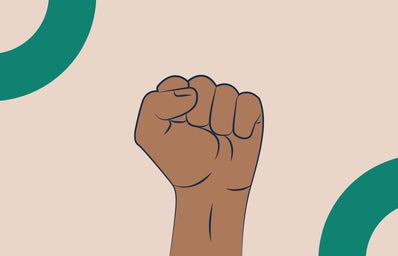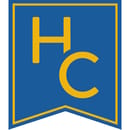In the spirit of Black History Month, there is a surge of academic resources, articles, tv shows and films that should be on your watch list. Among these should be the 2016 biographical drama Hidden Figures. The film tells the story of three African-American women who worked for NASA during the 1960’s infamous Space Race and is an important depiction of the hidden lives of women but specifically, women of colour.
“No crime being negro neither.”
The film begins with a backstory on our main character, Katherine Johnson, who is seen to be a child prodigy who is making her way up the academic ladder at a very young age. The timeline is fast-forwarded to adult Katherine, who is stuck on the side of the road with her two NASA colleagues and friends, Dorothy Vaughan and Mary Jackson. While Dorothy is busy attempting to fix the car, it’s clear that Katherine is nervous that a police officer will stop to question them. As if the universe had heard, a police car is seen approaching them from a distance. Dorothy attempts to ease everyone’s nerves by stating that there’s, “no crime in a broken down car” to which Mary wittingly retorts with, “no crime being negro neither.” This line shrewdly illustrates the essence of the kind of racism African-American people faced in the past and unfortunately, in the present as well, while setting the stage for the main themes of the rest of the film.
“I wouldn’t wish to be an engineer, I would already be one.”
As the story progresses, we learn that each woman specializes in a different department at the Langley Research Center for NASA. Katherine is skilled in analytic geometry, Dorothy in mathematics and Mary in engineering. When Mary is assigned to the heat shield team for the space capsule, one of her colleagues encourages her to apply for an official NASA engineer position. To his dismay, Mary expressed that she wasn’t going to entertain the idea as a black woman. Even when he posed her the theoretical question, asking her, “if [she] were a white man would [she] wish to be an engineer?” Mary still kept her realistic hat on, claiming that she wouldn’t have to wish it, she would already be one. Once again, Mary’s line beautifully portrays the barriers women of colour experienced at this time. What is interesting is that her colleague not only asks if she were a man but specifically a white man, which calls into question the concept of intersectionality; the idea that a person faces social, political or economic obstacles as a result of their sex, colour, financial status, sexual orientation etc. Not only was Mary facing an obstacle in the fact that she was a woman pursuing work in a male-dominated field, but she was also a black woman.
“Sorry I have no idea where your bathroom is.”
Throughout the film, we see that Katherine works with the Space Task Group but is the only woman of colour on the team. In addition to being treated like the elephant in the room, the director’s choice to include montages of Katherine running from building to building in order to go to the ‘coloured’ bathroom was poignant. Not only does it upset the audience to see a hardworking woman have to exhaust herself simply because she needs to go to the bathroom, but it also symbolizes the sheer lengths African-Americans had to go to in order to achieve the bare minimum. What really drives this scene home is the moment Katherine’s supervisor confronts her about where she goes for 40 minutes every day. Dripping wet head to toe after running in the rain, Katherine delivers a heart-wrenching speech about the micro and macro aggressions she has endured while working in the Task Group. It isn’t enough for her to have to run almost a mile to the bathroom every day, it’s the fact that everyone on the team doesn’t even think she has to do so. Not one person in the room was able to recognize the privilege they have to be in walking distance of a restroom or to not have a trash can shoved in their face because they were confused as ‘the help’ upon their arrival. Katherine even explains that in her briefing for work uniform she was told not to wear pearls, as if she even owned them: “Lord knows you don’t pay coloureds enough to afford pearls!”
“There are no special circumstances for anyone.”
As Katherine works hard for the Space Task Group, Mary finally decides to pursue an official position as an engineer at NASA. She doesn’t let the disheartening news that her credentials don’t suffice to stop her. Instead, Mary starts a petition for her to be able to attend night classes at a white high school since it is the only one that offers her required courses. In an attempt to figure out the new IBM 7090 electronic computer, Dorothy visits a white library to find the book she needs. She is approached by a librarian who explains that she is in the wrong section and that she can probably find what she’s looking for in the ‘coloured section.’ After being kicked out of the library, Dorothy explains to her sons that, “separated and equal are not the same,” a lesson that is important to anyone watching. These two storylines are a wonderful juxtaposition to a comment made by supervisor Vivian Mitchell earlier in the film about there being no exclusive opportunities for anyone. Though this character isn’t based on a real person, Vivian Mitchell is a representation of prejudice and unconscious bias of not only the era but of the present-day as well.
The few scenes mentioned here are just the beginning of how much Hidden Figures unpacks while still being an inspirational, family-friendly film. Though there are several inaccurate events and characters in the movie, as a whole, Theodore Melfi does a wonderful job of getting considerable messages across. In fact, Katherine Johnson herself told the Daily Press that, “it sounded very, very accurate” and who’s to argue with that? Despite historical inaccuracies, the film received praise and was nominated for Best Picture at the Oscars in 2017.
Even though I cannot speak from the perspective of a black audience member as I am not one, I can attest to the fact that the film is enjoyable, informative and important to anyone interested in African-American history. As a woman, I can say that watching Hidden Figures made me proud of Dorothy Vaughan, Mary Jackson and Katherine Johnson for the obstacles they had to overcome which paved the way for any aspiring female professionals. In the end, “any upward movement is movement for us all.”



